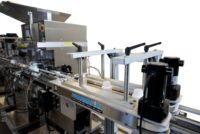4 Reasons Packaging Machinery Needs a Preventive Maintenance Program

Image courtesy of author
Most manufacturers focus on implementing a preventive maintenance program for the equipment involved in the early or middle stages of the production process. However, they are overlooking a critical aspect - the packaging line. The packaging process is a vital part of production as it helps keep the products safe during shipping, ensures that the products reach the customer as intended, and is a selling point if done properly and aesthetically.
1. PM Saves Costs
By ensuring that the packaging machinery receives preventive maintenance, manufacturers will experience lower overall downtime, higher productivity, better utilization of the machine operators, and fewer missed shipments, reducing several expenses like replacement, repair, and emergency maintenance costs.
If the packaging machinery doesn’t receive scheduled maintenance, then it will experience unexpected breakdowns, add to existing machine downtime, and cause production disruptions. Since the machine operators assigned won’t be able to complete their tasks on time, this will just add to the costs.
2. PM Improves Efficiency and Use
A huge benefit of including packaging machinery in the preventive maintenance program is that they will be receiving maintenance tasks such as worn-out parts being replaced, identification of underlying problems due to inspections, and equipment servicing. All of this means that the equipment will be more efficient than before, helping meet more deadlines due to fewer breakdowns.
Moreover, maintenance managers can incorporate the machine operators to help them with the equipment’s maintenance. The operators can be trained regarding the packaging machinery’s basic maintenance as well as how to use it efficiently. For instance, they can be taught about the red flags that show the machine will break down soon, and by using tools like CMMS software solutions, the operators can simply request emergency repairs, cleaning, etc.
On the other hand, by training the operators on how to handle the machinery, maintenance managers can eliminate any chance of mishandling the equipment, reducing unexpected downtime.
3. PM Makes Equipment More Reliable
A preventive maintenance program boosts equipment reliability in various ways. By gathering ample information regarding the equipment, such as when it needs lubrication, spare parts replacement, cleaning, etc., maintenance managers can easily schedule and adjust maintenance tasks that address these needs. By scheduling downtime (if necessary) and providing maintenance, the organization helps improve the equipment’s reliability and maintain its performance so that it can be used without fear of bottlenecks.
If the packaging machinery was included in the program, then it would also receive a boost in reliability and performance since it would receive scheduled maintenance and emergency maintenance, thus boosting the overall production process.
4. PM Reduces Associated Safety Risks
It’s quite simple, without preventive maintenance, the packaging machinery can cause injuries and harm to the machine operators as well as anyone in the vicinity. For instance, the machinery can overheat due to irregular cleaning (it needs proper ventilation). On the other hand, worn-out parts that aren’t replaced on time can cause the machine to explode or cause the employee to experience an electrical shock (due to exposed wiring) in serious cases. All of these can lead to workplace injuries, illnesses, and safety violations.
Preventive maintenance ensures that these workplace safety incidents are kept at bay. Maintenance technicians inspect the packaging equipment regularly and ensure that the problems are identified and addressed on time. Moreover, since the packaging machinery will be receiving replacements of worn-out parts as well as cleaning regularly, there are fewer chances of the equipment malfunctioning and causing serious injuries to workers and everyone else in the vicinity.
Ensuring Preventive Maintenance
Preventive maintenance is not only crucial for the equipment involved in production; it’s also necessary for the packaging machinery. Otherwise, the customers will not receive the products on time, the quality of packaging will be poor, and the packaging line will experience more downtime, leading to missed deadlines and losses.
Looking for a reprint of this article?
From high-res PDFs to custom plaques, order your copy today!






